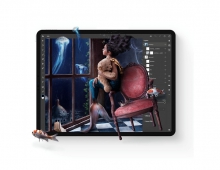
Software Turns 3D Images to PDFs
Adobe released software that will allow designers and engineers to save 3D images as PDF files and share those files with anyone who has the free Adobe Acrobat reader, the company said.
A new product in the Acrobat family, Adobe Acrobat 3D, allows users to convert 3D designs from major CAD applications into PDF files, said Rak Bhalla, a senior marketing manager for Acrobat at Adobe in San Jose, California. The product also enables a user to insert 3D CAD designs into Microsoft Word, Excel and PowerPoint files and convert those files into PDFs.
In addition, Adobe Acrobat 3D allows users to attach notes to certain parts of the PDF providing or asking for comment or feedback on the design. In turn, users of the free Acrobat reader software can send comments back to the designer directly on the PDF file, Bhalla said.
Adobe Acrobat 3D is currently available for $995.
CAD is the standard for tools that professionals such as architects and engineers use to provide computer drawings of building and product designs. Previously, designers working in CAD applications could only share 3D CAD files with people who had special software viewers for reading the files or a CAD program on their computers, Bhalla said. In many instances, designers would send people who needed to provide feedback on projects, such as customers or co-workers, 2D bitmaps of the designs.
There are a couple of problems with these scenarios. The first is that when sharing the actual CAD designs, a company is giving someone else access to its intellectual property (IP). In doing so, it runs the risk of a client or someone else taking those designs and finding another engineering firm to build them, said Nick Butkovich, project manager for Bradock Industries, a company in Des Plaines, Illinois, that builds plastic moldings and assemblies for the automotive industry.
Butkovich, whose company has been testing Adobe Acrobat 3D, said the product even lets users put an expiration date on PDFs created out of CAD files so people with whom they are shared can't open them with Acrobat Reader after a certain time. He said the product has been helpful for enabling engineers to share and receive feedback on designs without putting the company at risk for IP theft.
"It allows customers to make notations [on the design], but they?re not getting anything of any value," Butkovich said.
Another problem with the old way 3D files were shared is that looking at 2D bitmaps of what are supposed to be 3D images does not provide an accurate portrayal of the work in progress, Bhalla said. With the new Acrobat product, others can view 3D designs that look the same way as the designer sees them, so customers and others working on the project can provide better feedback on the designs, he said.
In addition, Adobe Acrobat 3D allows users to attach notes to certain parts of the PDF providing or asking for comment or feedback on the design. In turn, users of the free Acrobat reader software can send comments back to the designer directly on the PDF file, Bhalla said.
Adobe Acrobat 3D is currently available for $995.
CAD is the standard for tools that professionals such as architects and engineers use to provide computer drawings of building and product designs. Previously, designers working in CAD applications could only share 3D CAD files with people who had special software viewers for reading the files or a CAD program on their computers, Bhalla said. In many instances, designers would send people who needed to provide feedback on projects, such as customers or co-workers, 2D bitmaps of the designs.
There are a couple of problems with these scenarios. The first is that when sharing the actual CAD designs, a company is giving someone else access to its intellectual property (IP). In doing so, it runs the risk of a client or someone else taking those designs and finding another engineering firm to build them, said Nick Butkovich, project manager for Bradock Industries, a company in Des Plaines, Illinois, that builds plastic moldings and assemblies for the automotive industry.
Butkovich, whose company has been testing Adobe Acrobat 3D, said the product even lets users put an expiration date on PDFs created out of CAD files so people with whom they are shared can't open them with Acrobat Reader after a certain time. He said the product has been helpful for enabling engineers to share and receive feedback on designs without putting the company at risk for IP theft.
"It allows customers to make notations [on the design], but they?re not getting anything of any value," Butkovich said.
Another problem with the old way 3D files were shared is that looking at 2D bitmaps of what are supposed to be 3D images does not provide an accurate portrayal of the work in progress, Bhalla said. With the new Acrobat product, others can view 3D designs that look the same way as the designer sees them, so customers and others working on the project can provide better feedback on the designs, he said.





















